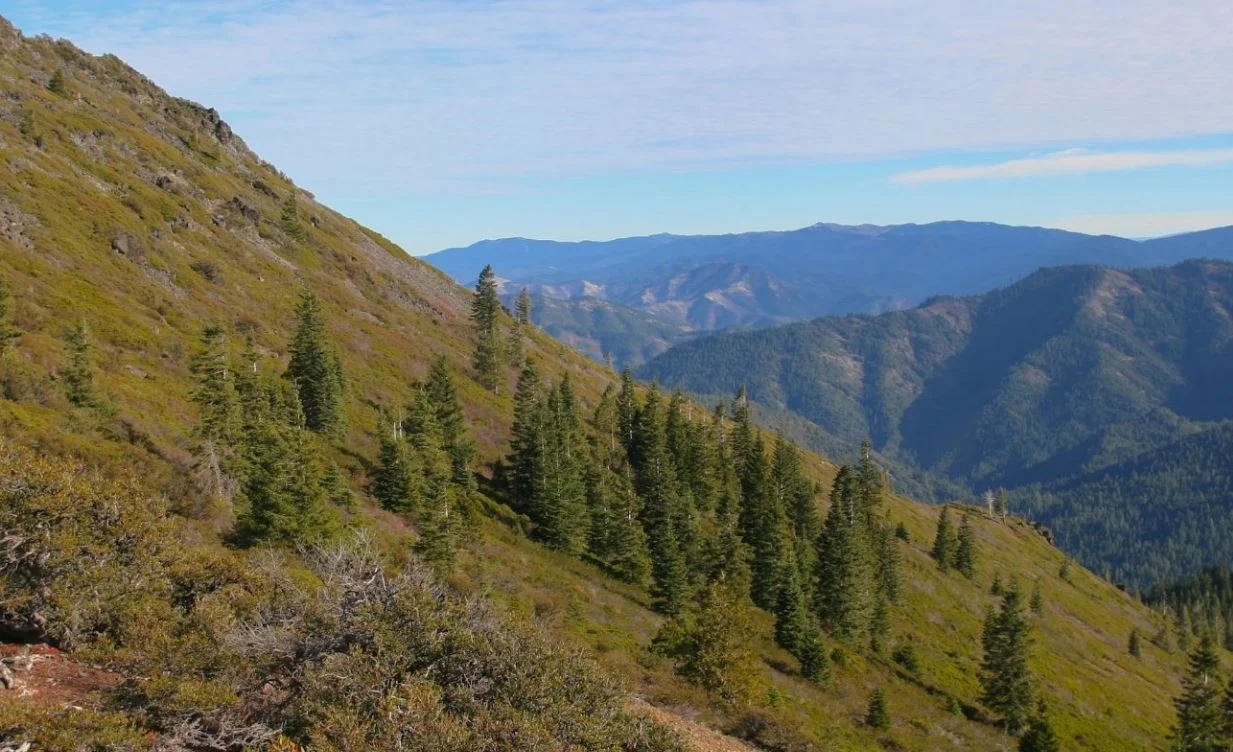For the second talk in KS Wild’s Summer Speaker Series on Fire Management, Dr. Christopher J. Dunn focused on five key things we need to remember in our fire-prone landscape, and a new method derived from his research that may alter how we fight fires in the future.
Read MoreOver 20 people braved the smoke Thursday night to assemble at the Northwest Nature Shop and listen to a lively presentation by forest veteran Richard Fairbanks.
Read MoreSome research shows the region’s forested landscapes were generally more open due to fire prior to the 20th century than they are today and today’s landscape is characterized by denser forests, less structural diversity, more fire-sensitive species, fewer coarse-grained vegetation mosaics, and a greater likelihood of high-severity fire (particularly in previously open ponderosa pine forests).
Read MoreThe Klamath National Forest proposes to log over 1,200 acres of post fire forests on the Siskiyou Crest. Scroll through this story map for more details on post fire forests and logging in the Klamath Siskiyous.
Read MoreA suite of species depend on fire for their life cycles. Healthy stands of white and purple Ceanothus burst forth after fire and provide for a suite of pollinators. Knobcone pines love the heat that enables their cones to release seeds. Black- backed woodpeckers thrive by foraging amongst blackened snags. Fire is as necessary as water is to the local forest ecosystem.
Read More




